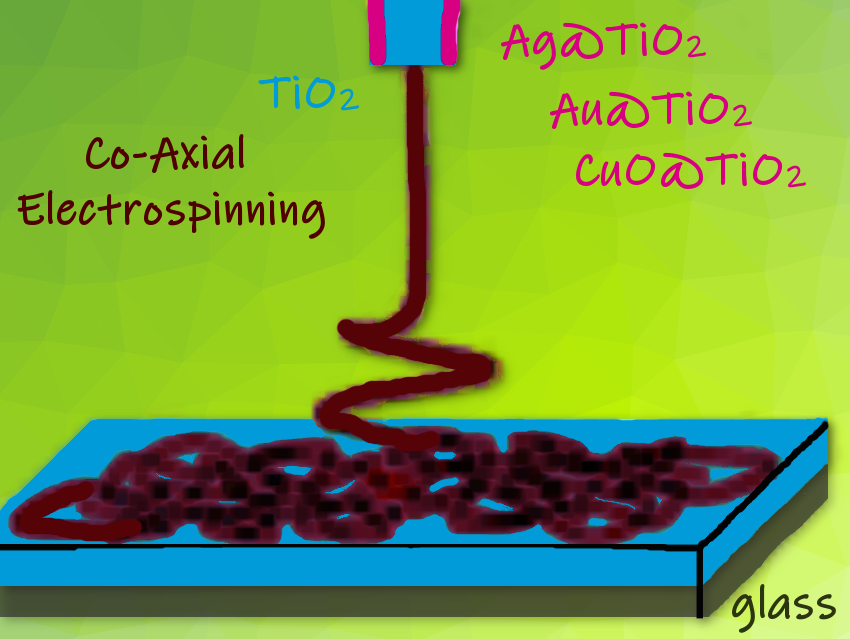Electrochromic color modulation (EC) is used, for example, in smart buildings, aircraft windows, self-dimming rearview mirrors, and energy storage devices. The assembly of an EC component consists of different material layers whose light transmission properties change when an electrical potential difference is applied. The coloring/bleaching takes place in the EC layer. Their composition varies depending on functionality from metal coordination complexes to conjugated conducting polymers to transition metal oxides such as WO3 and TiO2. TiO2 is less commonly used because of its poor coloration performance.
Cavit Eyovge, Arturo Susarrey-Arce, and Han Gardeniers, University of Twente, Enschede, the Netherlands, and colleagues have investigated a new path for the design of a TiO2-based electrochromic device with color-switching and optical efficiency. The researchers used co-axial electrospinning to create non-woven webs of TiO2 nanofibers loaded with Ag, Au, and CuO nanoparticles. The Ag, Au, and CuO nanoparticles enhance the optical absorption properties and accelerate color-switching and modulation. These nanoparticles are located on the fiber surface and embedded inside.
In co-axial electrospinning, an inner and an outer liquid are fed from two syringes in a spinneret (pictured). When a potential difference is applied between the spinneret and the collector, the liquid is coaxially drawn out of the spinneret and forms a cone consisting of a core from the inner liquid and a shell from the outer liquid. In this way, a core-shell liquid thread is formed, which ends up in dried form at the collector electrode due to the evaporation of the solvent. The resulting fibers were collected on top of fluorine-doped tin oxide (FTO)-coated glass substrates.
The team tested the composite layers in an electrochromic half-cell assembly. They observed that color tuning in the nanoparticle/TiO2 nanofibers is possible. TiO2 loaded with Ag shows a black-brown color, Au shows a dark-blue color, and CuO a dark-green color.
The researchers found that for electrochromic applications, the Au/TiO2 layer is the most promising choice. It has a color modulation time of 6 s, transmittance modulation of 40 %, coloration efficiency of 20 cm2/C, an areal capacitance of 300 F/cm2, and a cyclic stability of over 1000 cycles in an 18 h period. According to the researchers, co-axial electrospinning can be an alternative nanofabrication technique for smart colored windows.
- Color Tuning of Electrochromic TiO2 Nanofibrous Layers Loaded with Metal and Metal Oxide Nanoparticles for Smart Colored Windows,
Cavit Eyovge, Cristian S. Deenen, Francisco Ruiz-Zepeda, Stephan Bartling, Yury Smirnov, Monica Morales-Masis, Arturo Susarrey-Arce, Han Gardeniers
ACS Appl. Nano Mater. 2021.
https://doi.org/10.1021/acsanm.1c02231



